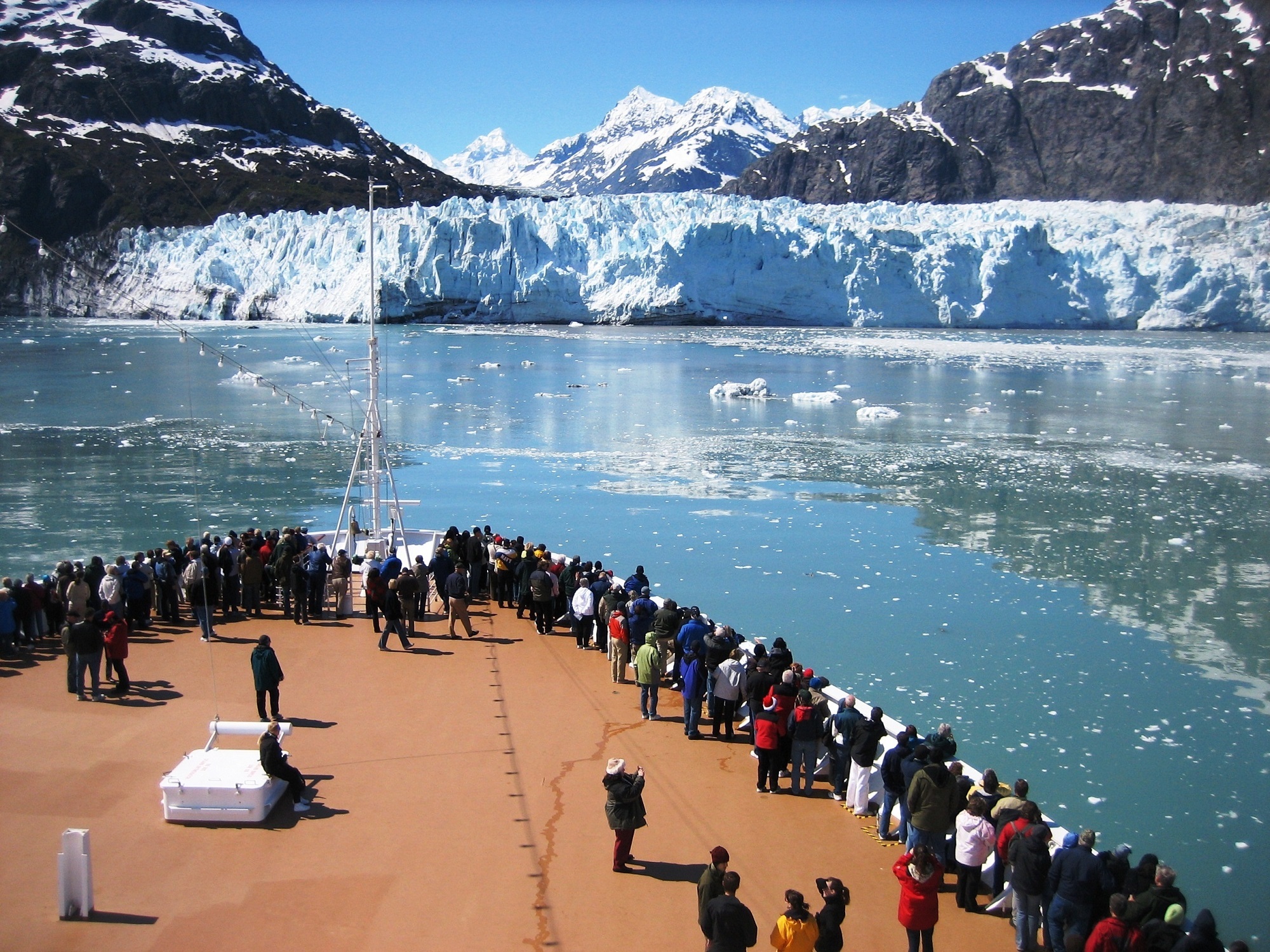The North Pole is one of the world’s coldest places with temperatures going as low as -70°C. It stretches out over 21 millions km2 of ice and snow, which do not repulse visitors anymore. Every year, 1,5 million tourists go to the Arctic to live what they think will be the experience of a lifetime. However, this kind of tourism is not free of consequences on the environment.
A tourism made possible by global warming
Tourism in the Arctic really began after the collapse of the USSR in 1991, since some of the best polar ships were now available for tourism. Demand is now increasing every year : 1 million went to the Arctic in the early 1990s, compared to 1,5 million nowadays. With its impressive landscape and wildlife, a growing number of people are now attracted to this region.
If tourism is developing that much, it is because global warming made it easier. In the Arctic, global warming is two times quicker than anywhere else, leading to hotter summers and glaciers melting faster. This opens up new roads for ships, which can now easily navigate.

A growing demand for Arctic tourism
Arctic tourism seems to become a new popular destination for tourists, especially those from North America, Asia and Eastern Europe. They are attracted by the incredible landscapes and fauna, especially its polar bears or whales. Some experts qualify this kind of tourism as cryotropisme– a french word describing the fascination for cold places based on representations of wilderness, traditional ways of life and autochthone communities. Being out of the traditional mass tourism destinations, some tourists believe that they have found a new place for ecotourism whereas they could not be further away from it.

A danger for the environment
This tourism can be considered as a form of “last chance tourism”: people want to see the Arctic landscapes before it disappears, but the fact that they see it only accelerates their disappearance. Indeed, Arctic tourism affects the environment in many ways.
First, those activities increase the level of pollution and garbage waste. As the number of tourists increases, a lot of waste is left behind and pollutes the area. Moreover, sewage from boats is often left in the seas, which endanger marine wildlife.
It also creates disturbance for wildlife and can disrupt the reproduction of animals. A lot of marine animals, such as seals, are gone because of the disturbance caused by the boats.
Tourism in the Arctic is now more significant than ever. It appears as a vicious circle : this kind of tourism was made possible by global warming but also contributes to this phenomenon. A lot of experts are warning about the danger of such tourism and call for restrictive legislation in order to preserve those landscapes.
Lena CHARVIN
Sources :
- images :
- cover : https://pxhere.com/fr/photo/814834
- First picture : © Gary Bembridge, London, UK (cc), 28 February 2019, 21:13, Orne Harbour Antarctica 2. « Photos from my Silversea Silver Cloud expedition cruise to the South Shetland Islands and Antarctica Peninsula in March 2019 ». – https://www.tipsfortravellers.com/silversea-antarctica
- Second picture : https://pixabay.com/fr/photos/iceberg-glace-le-groenland-tourisme-4499262/?download


Awesome! Its really amazing post, I have got much clear idea about from this post.